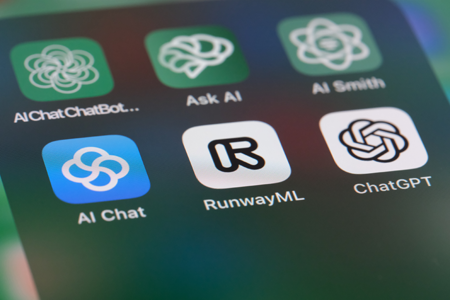AI Act, intellectual property and artificial intelligence – C. Lamantea
The Artificial Intelligence Act, a proposal with which the European Commission intends to regulate the use of artificial intelligence to prevent potential risks, will be examined by the European Parliament in the coming weeks; Carlo Lamantea briefly explains which aspects of the AI Act are relevant from the point of view of the protection of intellectual property rights.
For more than a year, there has been an ever-increasing number of news and updates on the topic of artificial intelligence, which is taking on growing importance not only on a technological level, but also with regards to its implications on an economic, social and legal level. Recent examples are the temporary interruption of Google’s “Gemini” image generation service after criticism for representations that do not adhere to reality, or OpenAI’s choice not to make accessible the beta version of its video generative artificial intelligence model “Sora” for security reasons. 
The possible side effects deriving from the use of artificial intelligence such as the loss of jobs and the spread of fake news have been much discussed, but also the issues relating to the respect of intellectual property rights, especially copyright.
The European legislator has decided to intervene on the matter through a proposal for a regulation on artificial intelligence, called the Artificial Intelligence Act (AI Act), considered the first legislative text on artificial intelligence in the world. Approved on 13 February 2024 by the Commission for the Internal Market and Consumer Protection and the Committee on Civil Liberties, Justice and Home Affairs of the European Parliament, the text will be discussed by the parliament itself in plenary session next April.
The proposed regulation aims to regulate the sector to prevent potential risks deriving from artificial intelligence systems and their possible uses.
Article 3 of the text defines an artificial intelligence system as “a machine-based system designed to operate with different levels of autonomy and which can demonstrate activities after implementation and which, for explicit or implicit objectives, infers, from input it receives, how to generate outputs such as predictions, content, recommendations or decisions that can influence physical or virtual environments”. It should be noted that the European Commission will also adopt more detailed guidelines on the application of this definition in the future.
According to the proposal, artificial intelligence systems will be categorized according to their risk profile: unacceptable risk for systems are expressly prohibited by the regulation itself; high risk, where systems will be assessed based on compliance with minimum requirements; low risk for systems subject to transparency obligations; minimal risk for obligation-free systems.
In this context, artificial intelligence systems also include those ‘generative’ artificial intelligence systems that require large datasets for their training. The most discussed issue in the field of intellectual property in fact concerns precisely the instruction of these systems on the basis of content protected by copyright.
The use of material protected by copyright for the training of artificial intelligence systems is in fact already a source of legal disputes, such as for example the lawsuit initiated in the United States by the New York Times against OpenAI, creator of ChatGPT, and the legal proceedings initiated in the United Kingdom by Getty Images against Stability AI, creator of the Stable Diffusion software.
The proposed regulation intersects with a regulatory text already in force and particularly debated, namely the European Union’s Copyright Directive No. 790/2019 (Copyright Directive), especially with regard to aspects related to the scraping of databases which is necessary for the training of intelligence systems artificial. If for scientific purposes the text and data mining activity is permitted even without the authorization of the rights holders, the extraction activity in general can only take place when the use for such purposes has not been expressly reserved by the owners. In both cases, access to the works must have occurred legitimately.
Despite having no explicit references to intellectual property, Recital 60 of the proposed regulation states that suppliers of artificial intelligence models will still have to comply with European Union legislation on copyright, including therefore the Copyright Directive.
Lastly, it should be noted that artificial intelligence service providers will have to make a summary of the contents used for model training available to the public. This summary, although not technically detailed, must be complete and take into account the need to protect trade secrets and confidential company information.
The future of artificial intelligence is still to be defined, as is its relationship with intellectual property. However, the extent of the changes underway, which some describe as epochal, certainly requires measures to strike a balance between the protection of rights on the one hand and the development and use of new technologies on the other.
